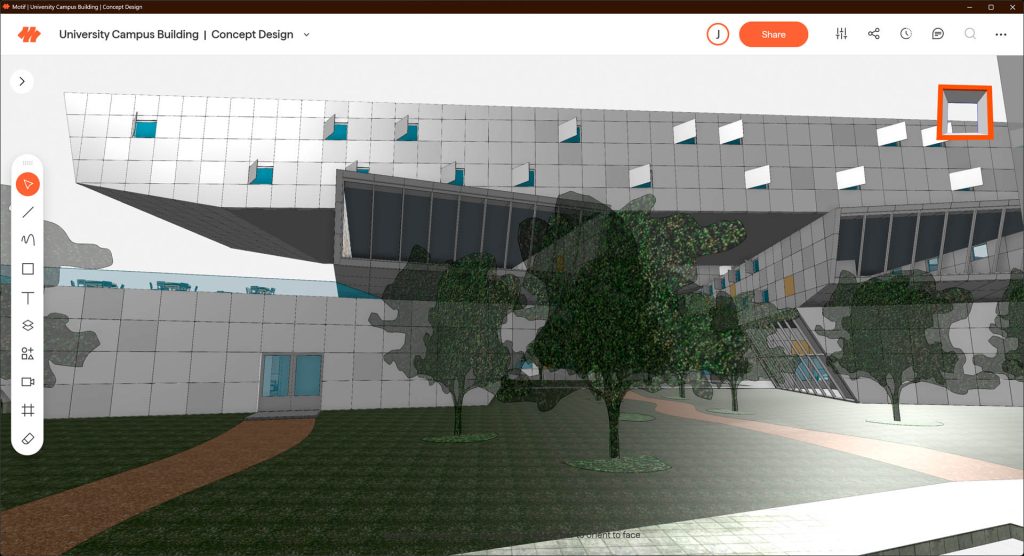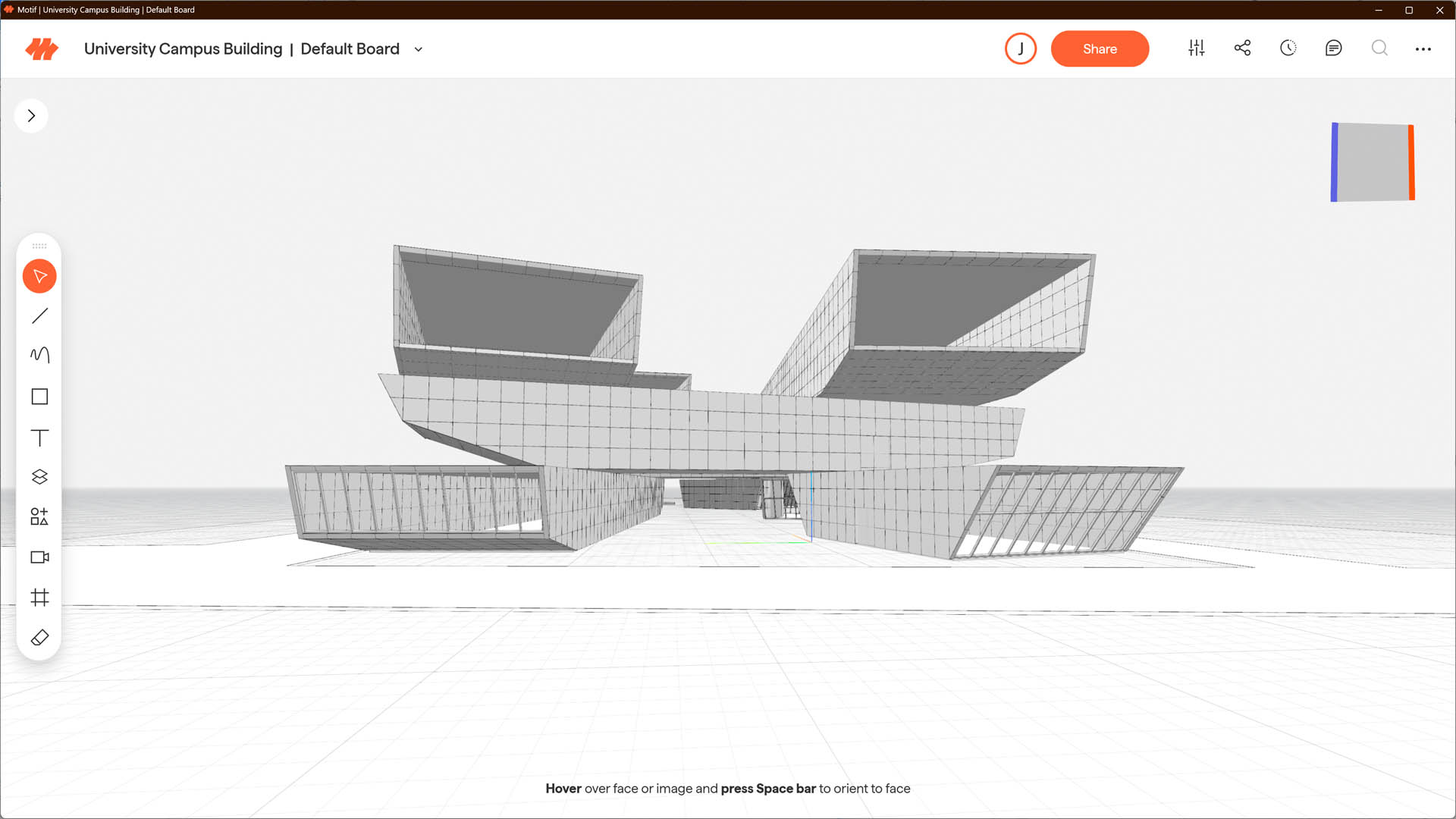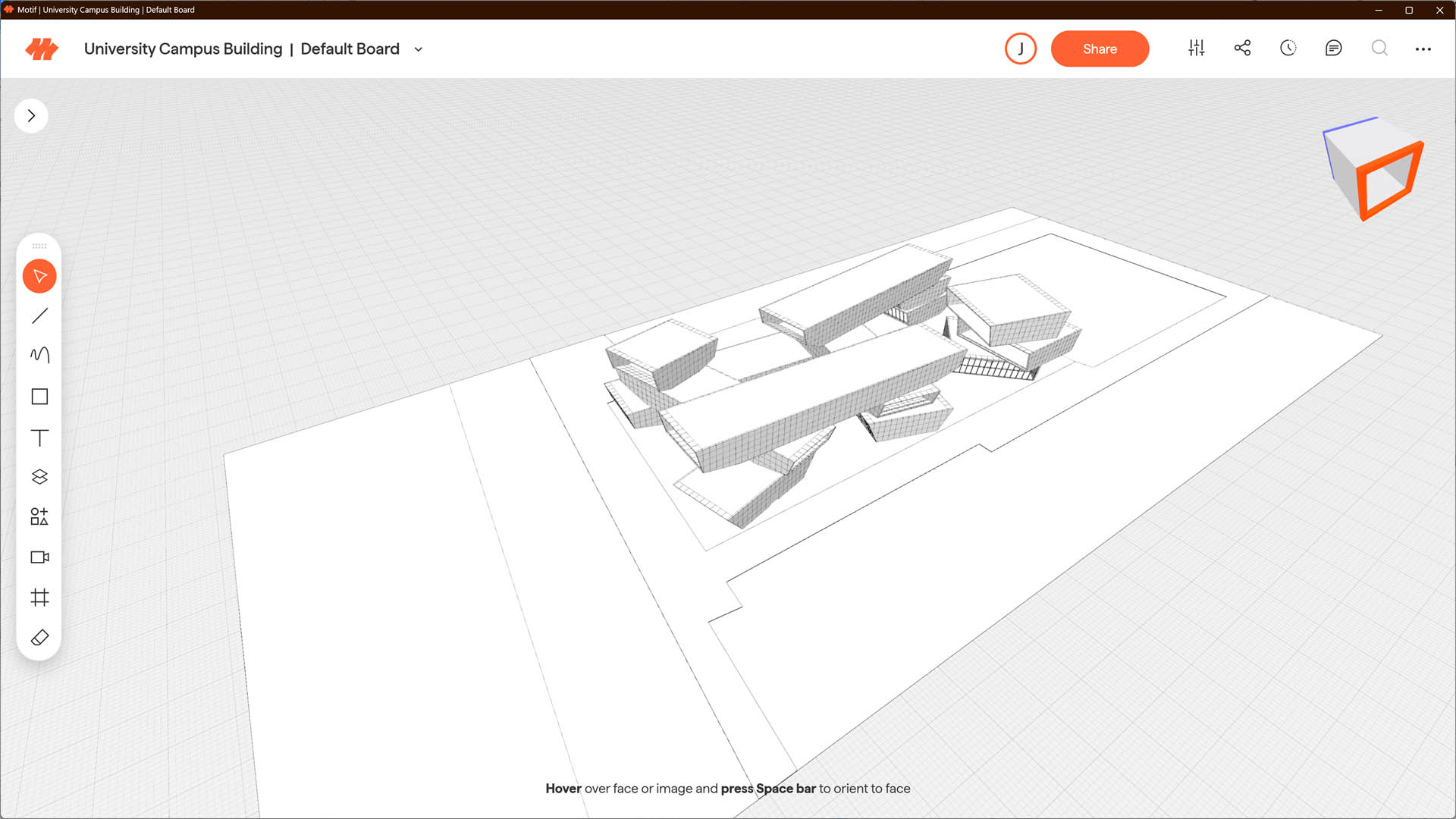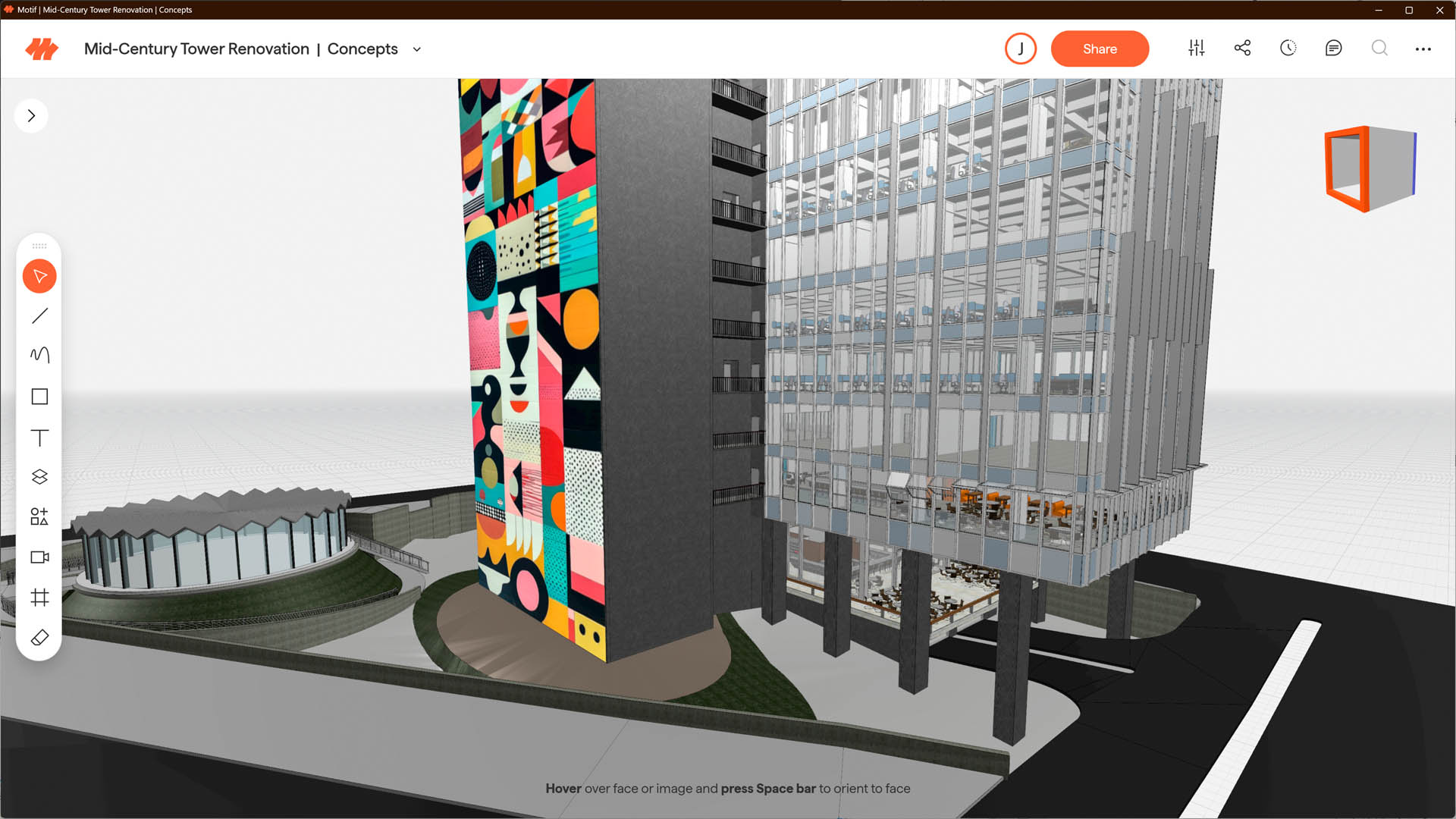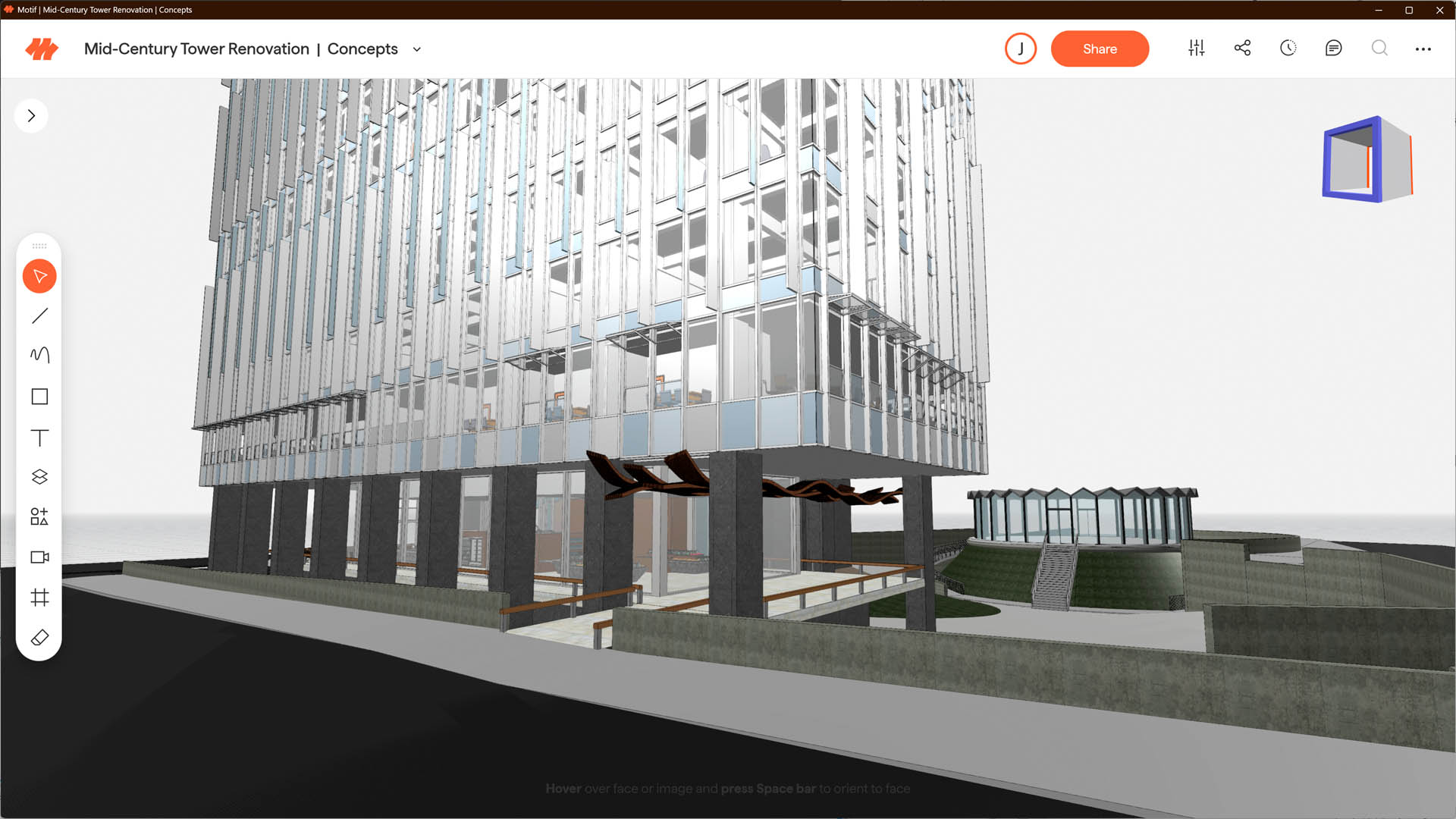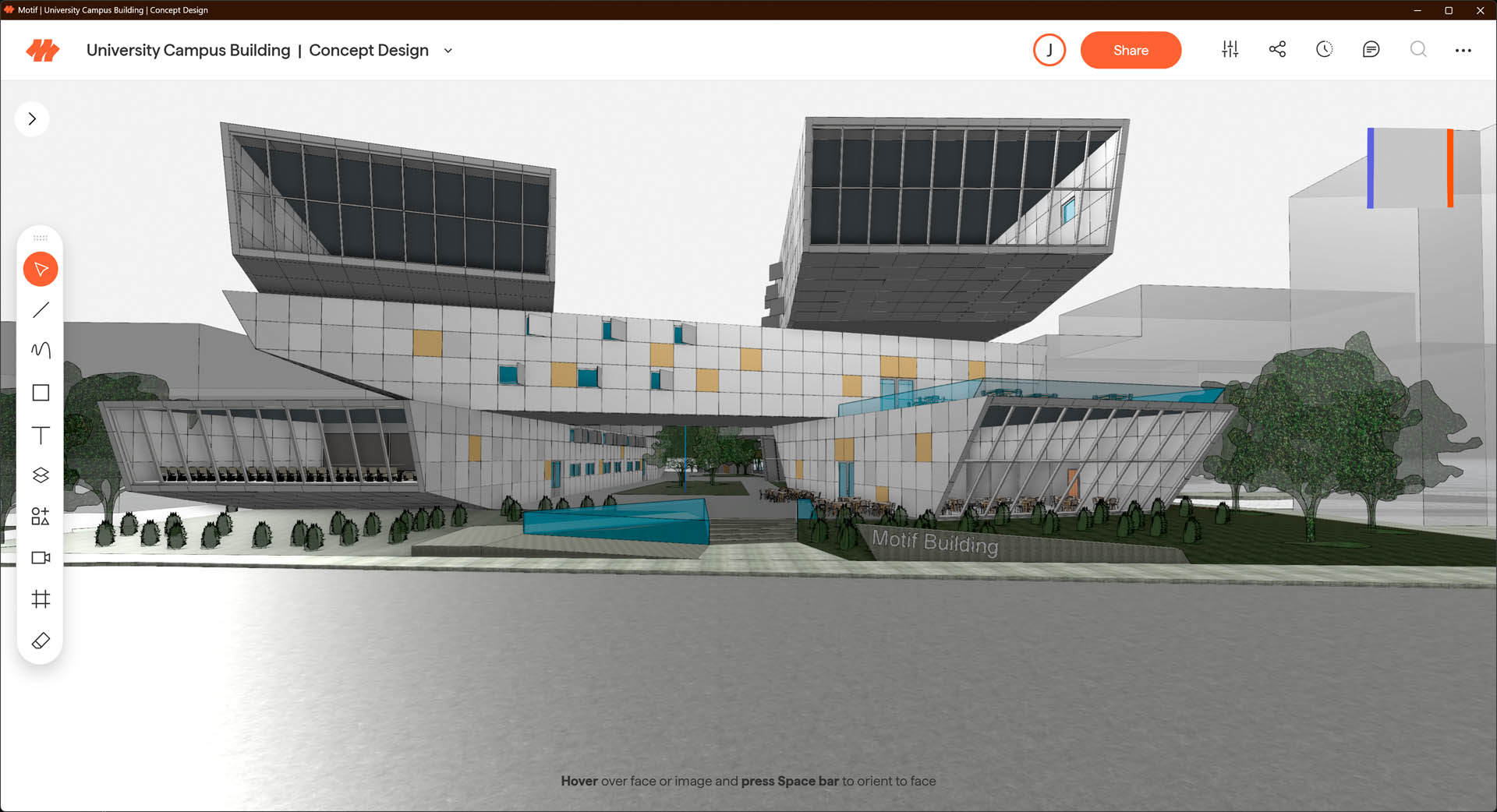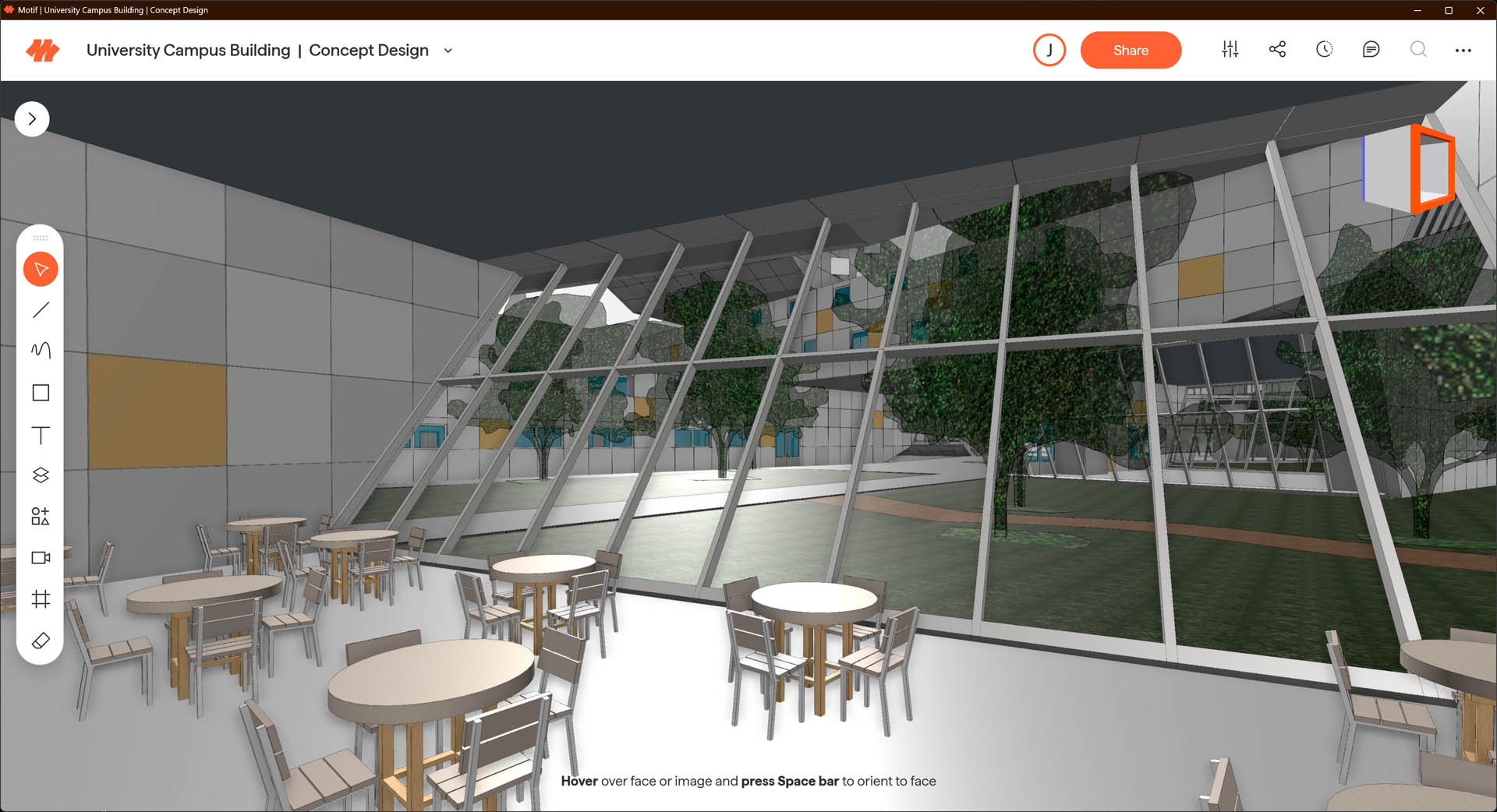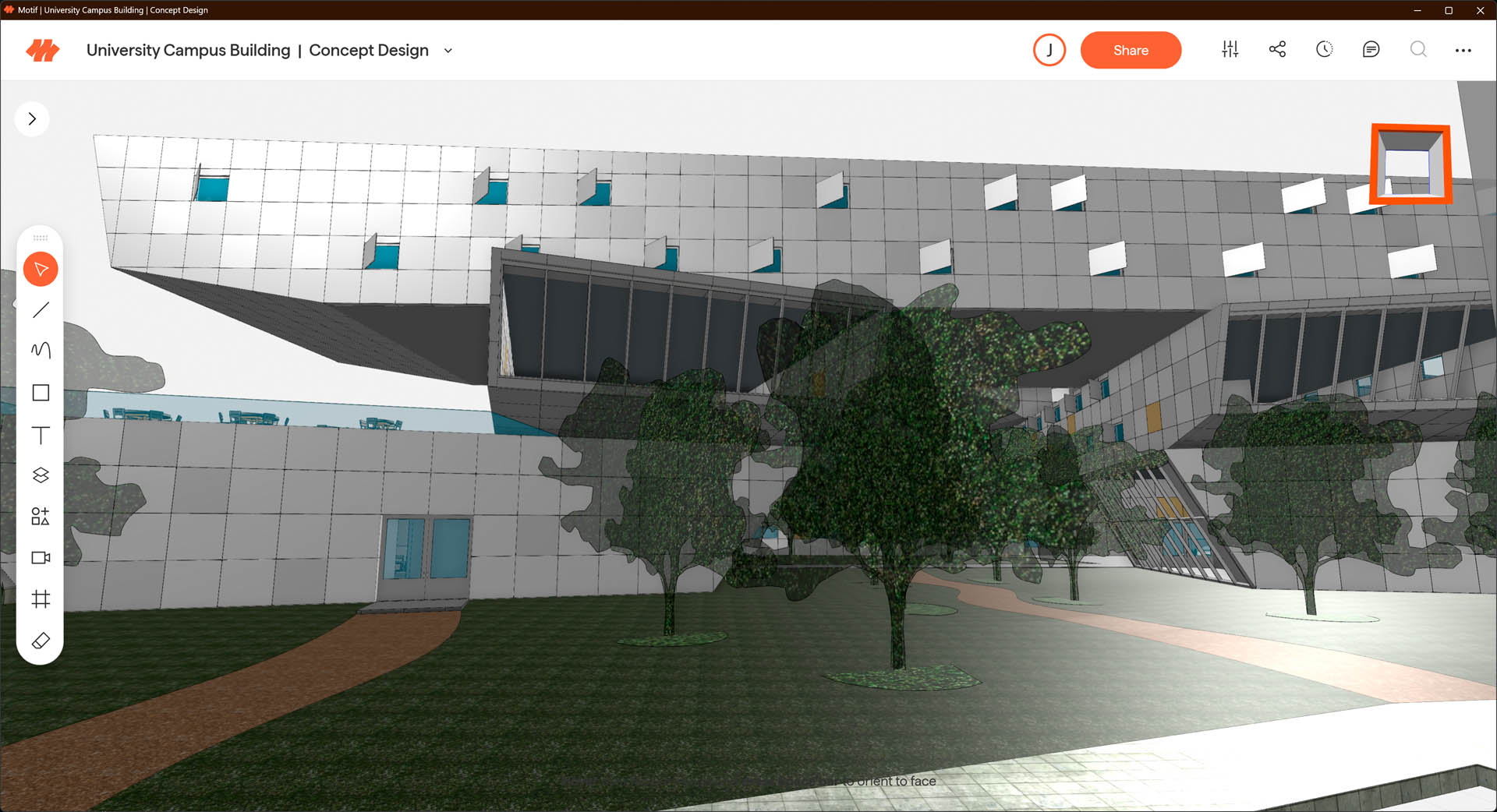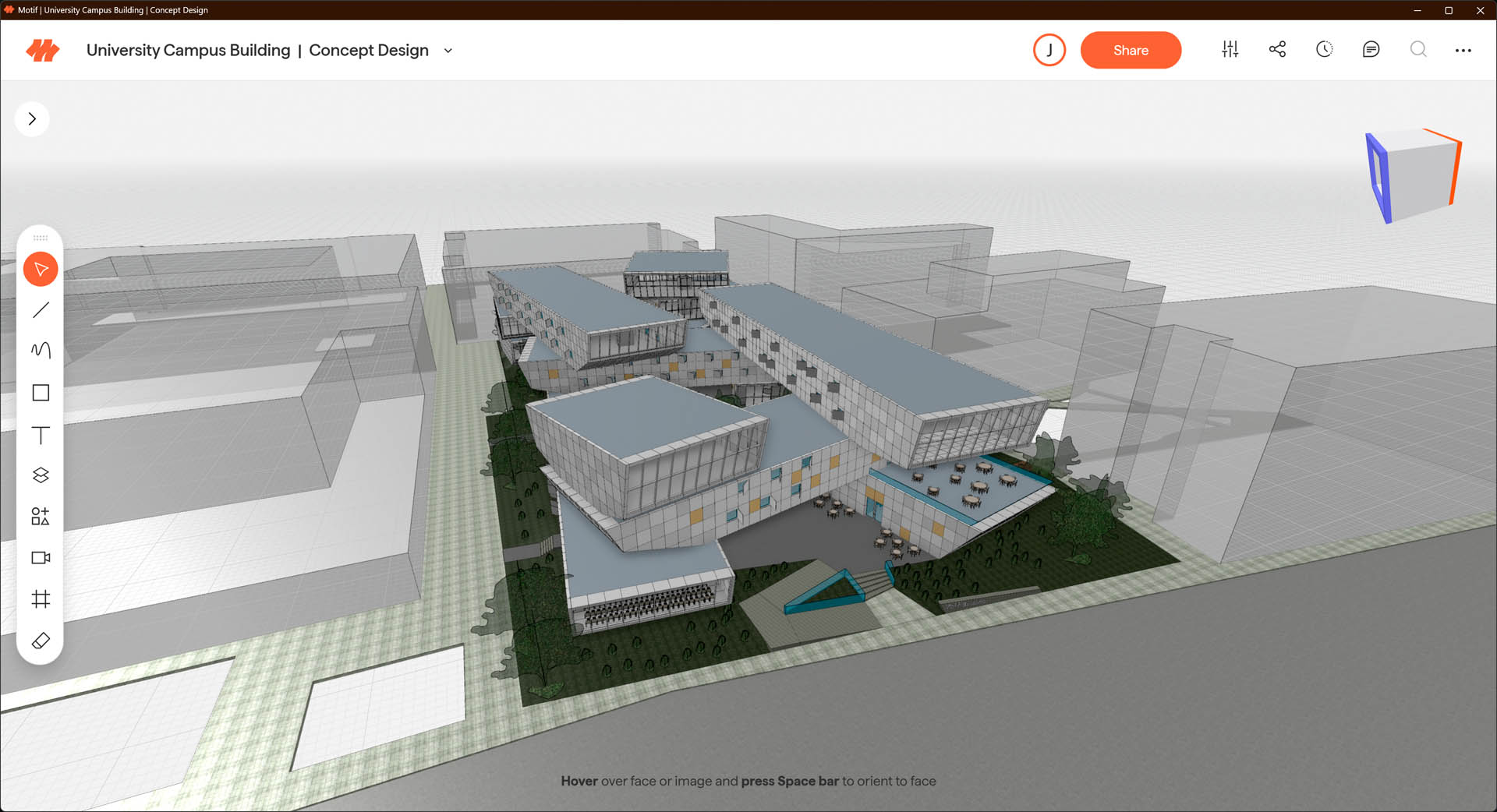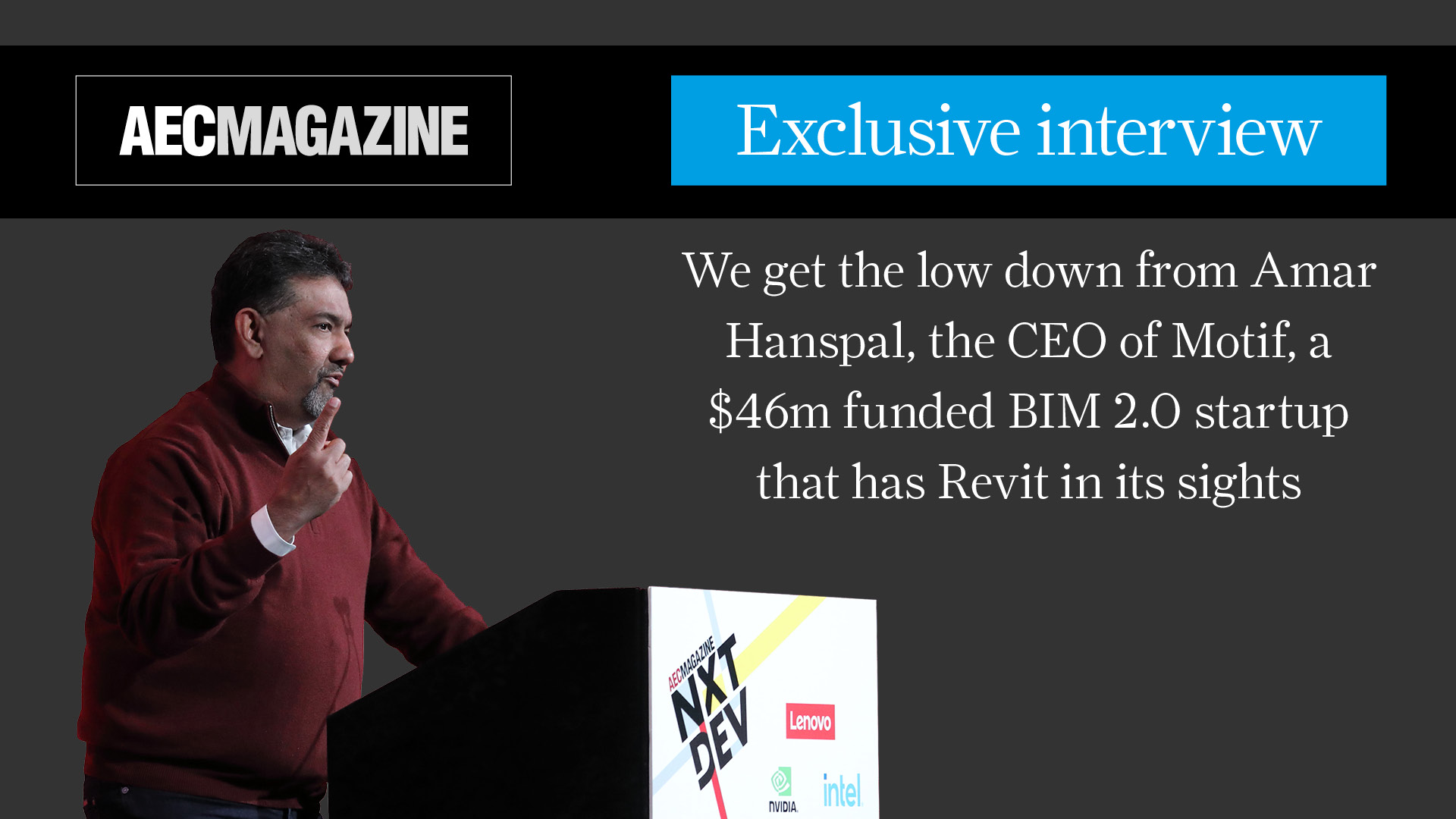At the end of March BIM 2.0 start-up Motif, which recently came out of stealth, launched its first product, and it’s perhaps not what you expected it to be, writes Martyn Day
With its stated aim of developing a next generation BIM tool to rival Revit, Motif’s initial offering was bound to be a small subset of what will be the finished product. In AEC Magazine, we have explained this many times before, but it’s worth saying again – the development of a Revit competitor is a marathon and all the firms that are out of stealth and involved in this endeavour (Qonic, Snaptrude, Arcol and Motif), will be offering products with limited capabilities before we get to detailed authoring of models.
Motif V1 is a cloud-based tool which aims to address a range of pain points in architectural engineering and construction workflows, particularly in the design presentation and review phases. From what we have seen of this initial offering, it’s clear that Motif has identified several features which you would typically find across a number of established applications – Miro, Revizto, Bluebeam, Speckle, Omniverse and many CDEs (Common Data Environments). This means that there’s no obvious single application that Motif really replaces, as it has a broad remit. Talking to CEO Amar Hanspal (read our interview), the closest application the company is looking to as a natural replacement for is Miro, which became popular during Covid for collaborative working. As it’s browser-based it works on desktop, laptop or tablet.
Find this article plus many more in the March / April 2025 Edition of AEC Magazine
👉 Subscribe FREE here 👈
Ideation assembly
The initial focus of the release is to enhance design review workflows by offering a more connected and 3D-enabled alternative to Miro. Users can collate 2D drawings, PDFs, SVGs and 3D models from a variety of different sources, to bring them into the Motif space for the creation of presentations, markup and collaboration.
The primary sweet spot is for collating project images and drawings into Concept presentations, using an ‘infinite canvas’ which can be shared with team members or clients in real time. Models can be imported from multiple sources and views snapshot, drawings from Revit added, material swatches for mood boards, images of analysis results, pretty much anything. These can be arranged collaboratively and simultaneously by multiple users and the software neatly assists in grid layout with some auto assistance. There’s also the ability to add comments for team members to see and react to.
Motif recognises that a data centric approach is essential in next generation tools. With this aim in mind, Motif borrows some ideas from Speckle, offering plugins for a variety of commonly-used design tools, such as Rhino and Revit. These plugins offer granular, bi-directional links to the cloud-based, collaborative Motif environment. One of the special capabilities is the live broadcasting of objects from Revit as they are placed, with Motif displaying the streamed model.
It’s possible to run Revit side by side with Motif, with Motif automatically synchronising views. As geometry is added to Revit it appears almost instantly in the Motif view. This is food for thought, as it makes live Revit design information available to collaborative teams. While this is Speckle-like there’s no need to set up a server or have high technical knowledge.
Motif facilitates granular sharing of information through “frames,” allowing users to select and share specific subsets of data with different stakeholders. The software translates data from native object models (e.g. Revit) into a ‘neutral internal object model’ (mesh and properties) which allows it to connect with different systems.
Buildings can be manipulated in 3D and there’s smart work plane generation. This might not be super useful right now, but we can imagine how it will play out once the BIM modelling tools get added in. For now, images can be applied to surfaces and freehand 3D markup and surface-based detection give the software an uncanny intuition for selecting surface planes and geometry when the mouse is near.
It’s possible to make markups to these ingested objects in Motif, and somewhat amazingly these comments can also be seen back in the Revit session. For now, though, there’s no clash detection or model entity editing available in Motif – its initial use is design review. Motif stores all the history at an object level, allowing users to go back in time to previous states of a project and see who changed what.
The product’s interface is wonderfully uncomplicated with only nine tools. The display feels very architectural, presenting ‘model in white’ with some grey shadowing.
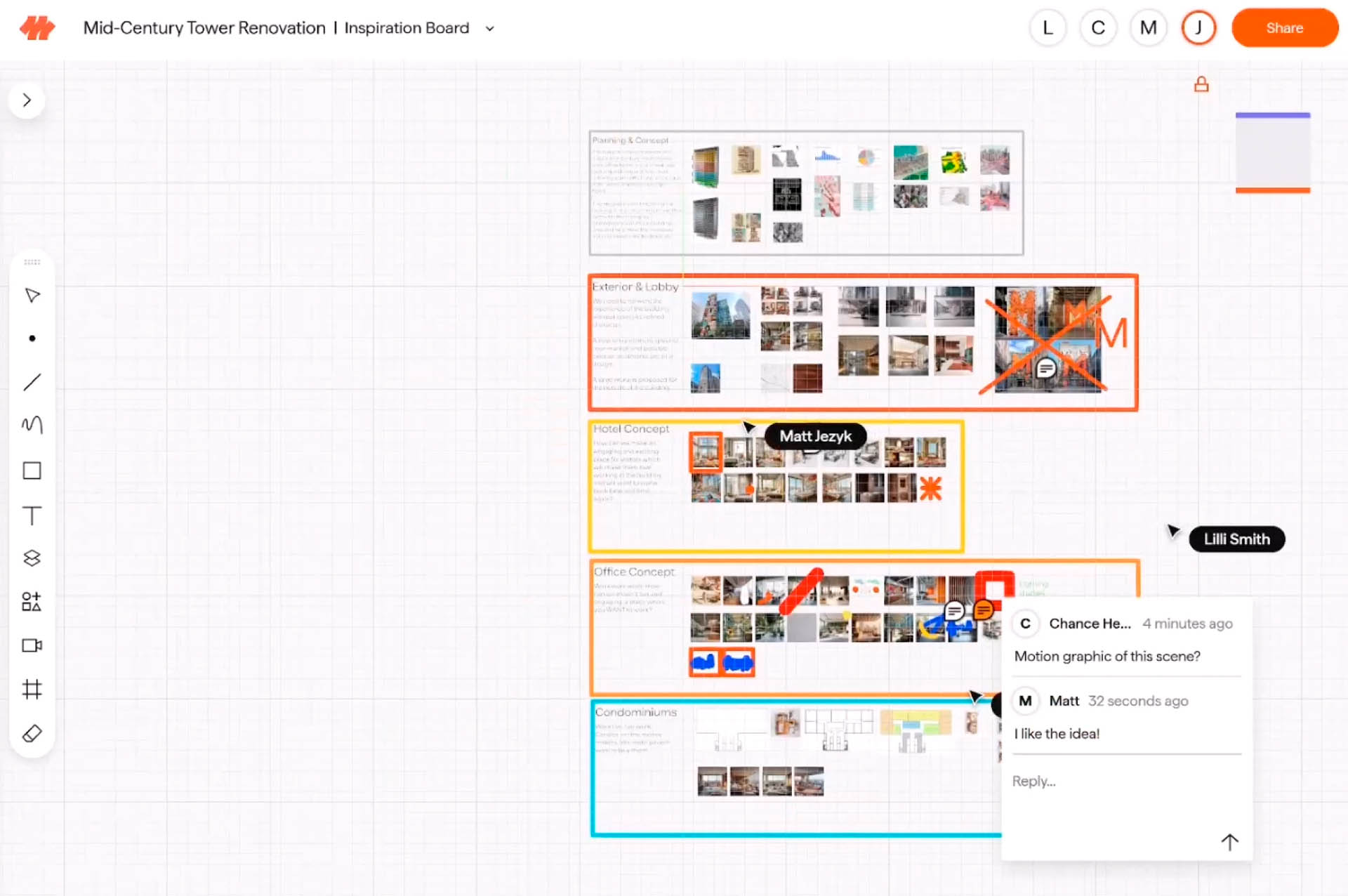
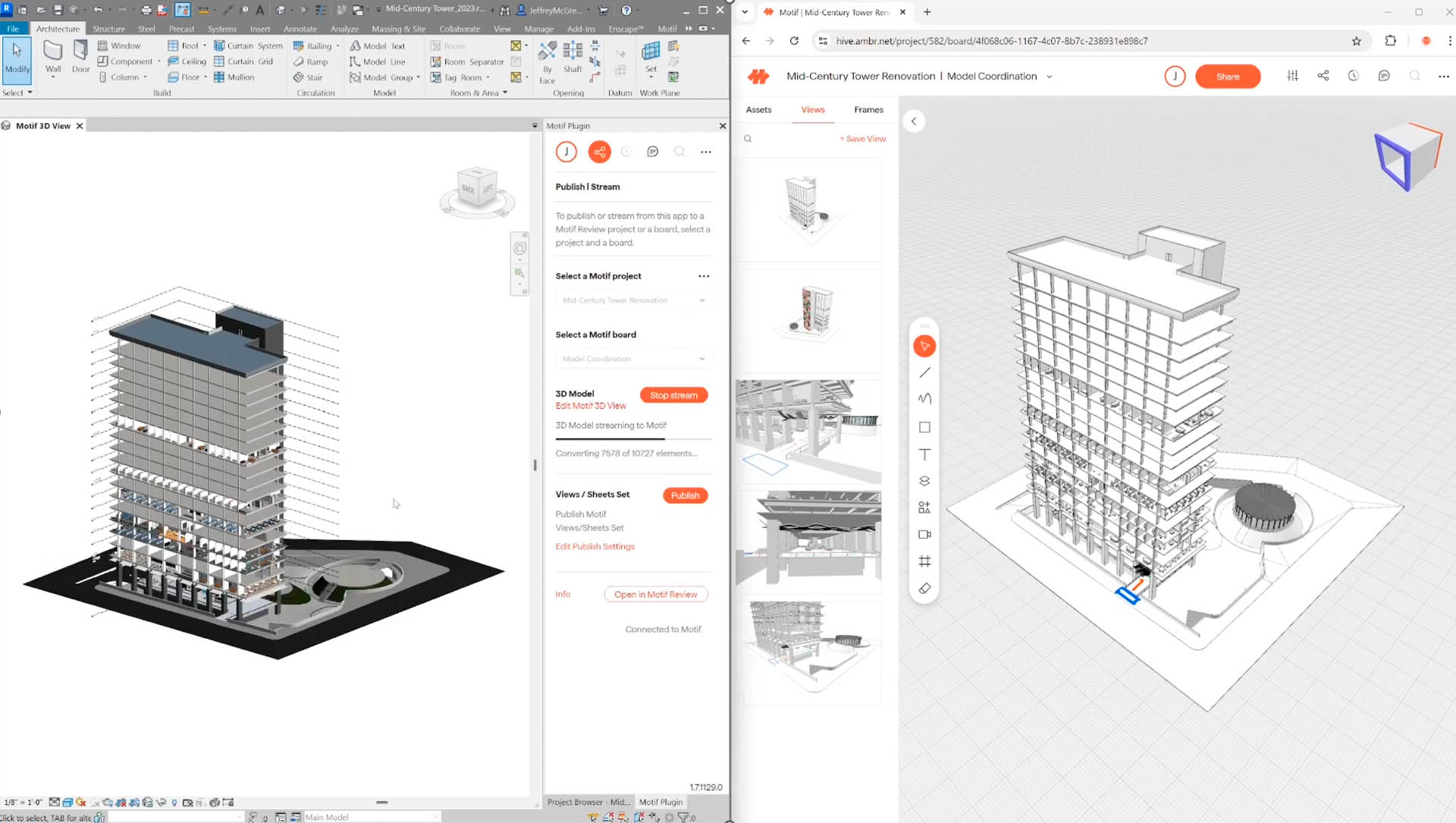 <
<
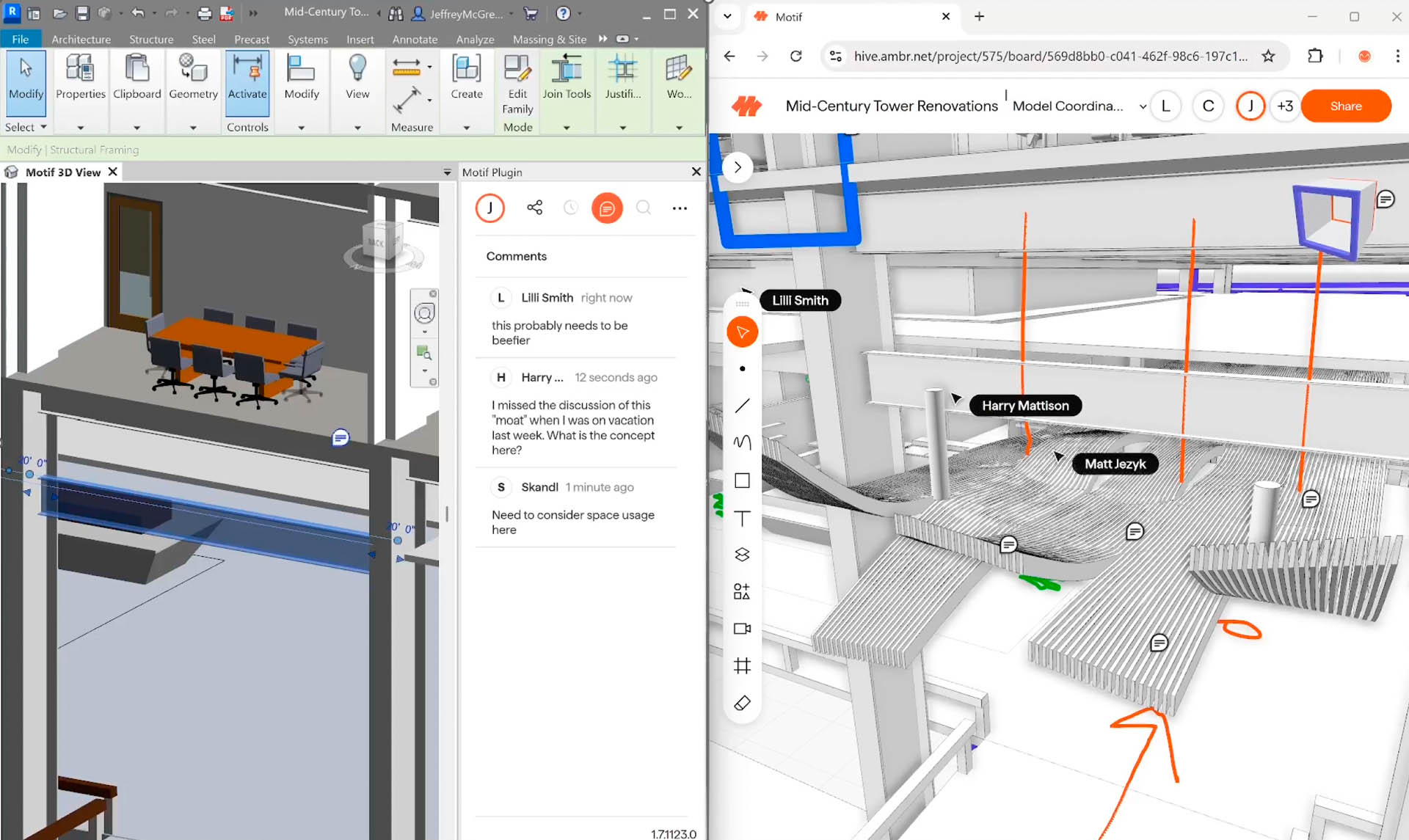
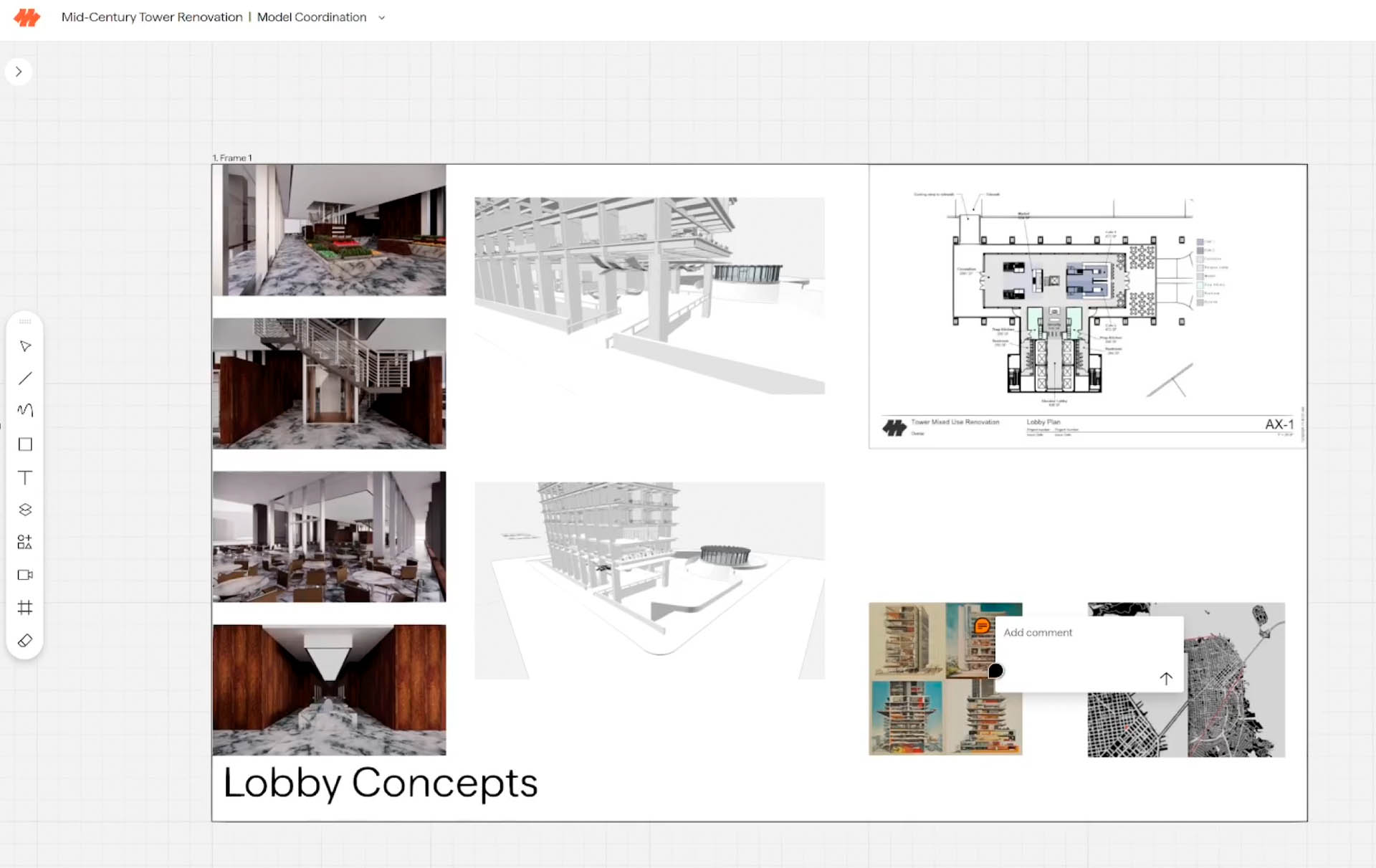
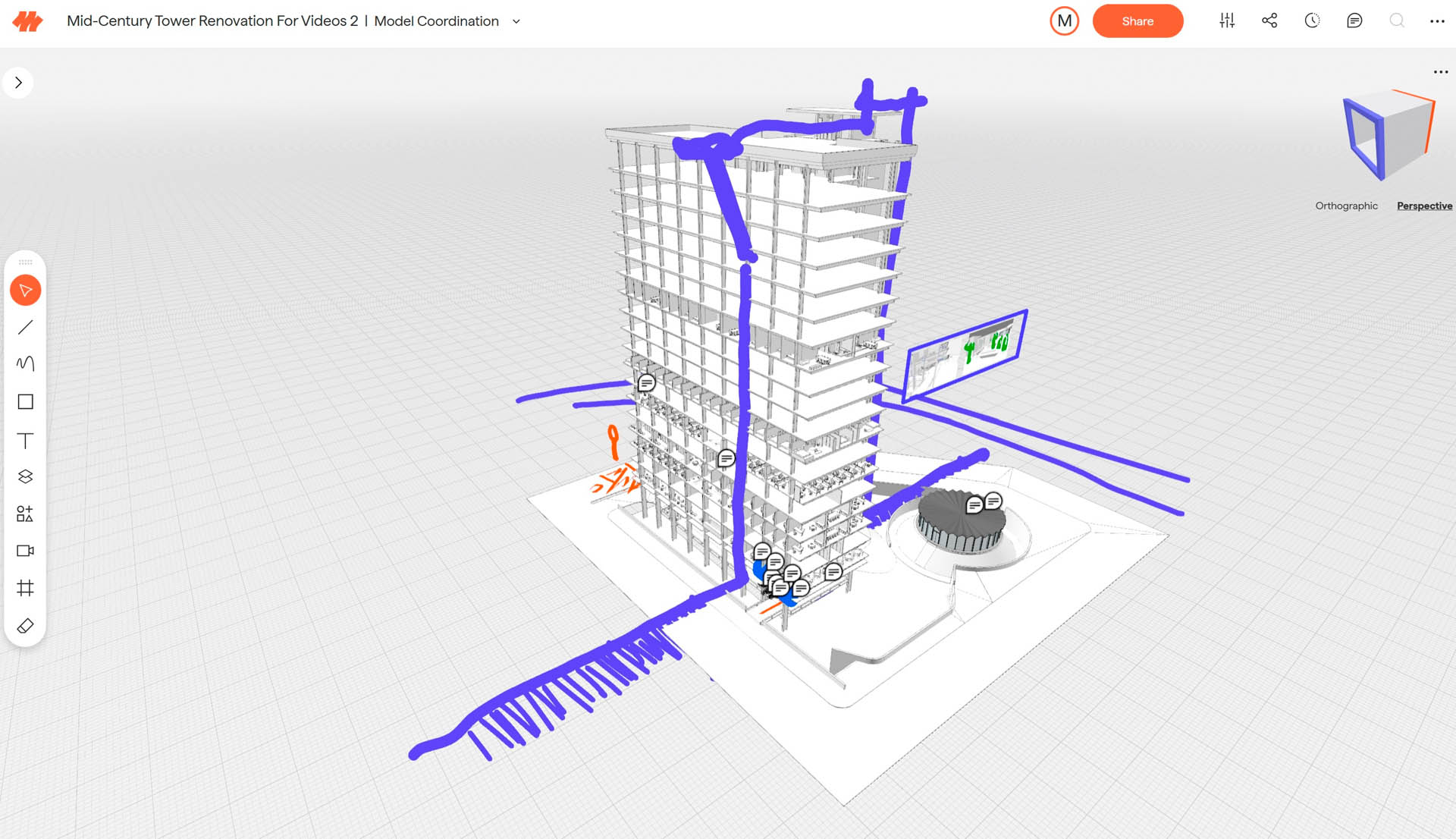
The data model
The underlying data model is important. Motif uses a ‘linked information model’ based on the idea that in AEC all data is distributed data. Instead of trying to centralise all the project information in a single system, which is what Autodesk Docs / Autodesk Construction Cloud (ACC) does, Motif aims to link data where it resides and assumes that no single system will have all the necessary information for a building. So instead of ingesting and holding all the data to be one version of the truth, somewhat trapping users in a file format, or cloud system, Motif will pull in data for display and reference reasons. In the future we guess it will be mixed with its own design information.
Motif is intended to be ‘pretty open’ according to the team, with plans to expose the API and SDK to allow users and developers access to extract and add their own data and object types.
At the moment the teams are developing plugins to connect Motif with various commonly-used BIM and CAD applications, including Grasshopper, Dynamo, SketchUp and AutoCAD, in addition to Rhino and Revit which are already supported.
Business model
At the early stage of most startups, having a sales force and actively selling an early version of an application is usually a low priority. Instead, many startups just seek early adopters for trial and feedback. Motif, while being in development for almost two years already has a small sales team and is actively selling the software for $25 a month per user. Hanspal says this is to ensure good discipline in software development, to provide scalability, performance, and responsiveness to customer feedback. The initial adoption is expected to come from companies looking to replace parts of their Miro workflow.
Conclusion
Motif fully intends to take on Autodesk Revit in the long term. CEO Hanspal realises this is a multi-year marathon, so while the team develops a modelling capability, it is utilising elements of its current technology to provide collaborative cloud-based solutions for a variety of pain points which they have identified as being under-serviced.
For now, the company aims to develop a cloud-based 3D interface for project information which will not necessarily replace existing BIM or drawing systems but will act as an aggregator and collaboration platform for those using a wide array of commonly used authoring tools. The software comes to market with an interesting array of capabilities, which may seem basic but provides some insight into what’s coming next – the bi-directional streaming between authoring tool and Motif, the deep understanding of Revit data, models and drawings, Revit synchronisation, connectivity to Rhino and smart interaction with model data all impress.
There may be some frustration with obvious capabilities that are currently omitted, such as simple clash detection between imported model geometry but we are sure this is coming as development progresses.
What Motif does, it does well. It’s hard to pigeonhole the functionality delivered when compared to any other specific genre of application currently on the market. Many will find it’s well worth having for the creative storyboarding alone, others may find collaborative design review the key capability. Those that can’t afford Omniverse might love the ability to have an application that can display all the coordinated geometry from multiple applications in the cloud for project teams to see and understand.
t’s important to remember that this is a work in progress and as the software develops its capabilities, it will expand into modelling and creating drawings. Its tight integration with Revit will be useful and reassuring
to those who want to mix and match BIM applications as the industry inevitably transitions to BIM 2.0.
Meanwhile, the Motif team continues to grow, adding in serious industry firepower. After hiring Jens Majdal Kaarsholm, the former director of design technology at BIG last year, the company has added Greg Demchak, who formerly ran the Digital Innovation Lab at Bentley Systems, as well as Tatjana Dzambazova formerly of IDEO. Demchak was an early recruit at Revit before Autodesk acquired it and Dzambazova was a long time Autodesk executive, deeply involved in strategy and development of AEC, reality capture and AI. It seems the old gang is getting back together.
Interview with Amar Hanspal, CEO, Motif
Martyn Day: For this first product, what was the rational in bringing out this subset of features. They seem quite disparate?
Amar Hanspal: What we are trying to do, over multiple years, is build out a system that you would call BIM, to provide everything you need to describe a building and create all the documents that are necessary to describe the building. There are four key elements, plus 1: modelling, documentation, data and collaboration. And then the plus one is scripting.
The data part is all about how it’s managed, stored, linked, represented and displayed for a customer, which is the user interaction model, around all of this. Scripting is just automation across all of these four things. And we have always thought about BIM that way.
We know people will react to the initial product because they see the user interface and think we are doing markup and sketching. But behind the scenes, these are just the two things that got ‘productised’ first, data handling and collaboration, while we build towards the other capabilities.
Our philosophy around data is, no matter how we store it, fundamentally, no system is going to have all of the data necessary for a building. So instead of trying, like ACC tries to centralise the information – and while you will always have some data in your system, I think the model we’re trying to bring to bear is a ‘link information model’, like the idea that you’re watching us bring with the plugins and the round tripping of the comments. We’re going to assume that data is going to stay where it is, and like the internet, we have to figure out a linking model, sharing model, to bring it together.
You can look at the app where it currently is, which features a couple of core concepts that we’re trying to bring to market – this distributed data idea, and then the second one is the user model on top of it, enabling sharing.
Martyn Day: You have been talking with leading AEC firms for two years. How will you go from this initial functionality to full BIM?
Amar Hanspal: We can’t wait ten years, like Onshape to Fusion to get all the capabilities in there. So what’s the sequencing of this? From sitting down and talking to customers, the design review process that they were implementing, we product we ran across the most was Miro. For design review many are using a Miro board. They would express frustration that it was just a painful, static, flat process. That’s where our ‘light bulbs’ went off. Miro is just collages and a bunch of information. Even when we become a full BIM editor, we’re still going to have to coexist with Tekla, Rhino, Tekla, some MEP application. We actually have to get good at being part of this ecosystem and not demanding, demanding to be the source of truth for everything.
It gets us to the goal that we’re looking for, and we’re solving a user problem. So that’s how we came up with what we were going to do first, a Miro workflow mirror, and some companies are doing design interview using Adobe InDesign. Over time, we can become more capable of replacing some of the things that Bluebeam and Revizt
Martyn Day: With the initial release you have started selling the product, many start-ups put off developing sales to get early adoption?
Amar Hanspal: It’s good discipline. It’s like, eating your vegetables. When you ask people for money, you have to prove value. It’s good discipline for us to deliver something that’s useful to customers, and see them actually go through the process of making decision to spend money on it because they see how much it’s going to help or save them. That’s really obviously Martin, why we’re doing it. Just good discipline. Fundamentally, we want to make sure that we’re professional people developing software in a professional way, it forces us to be good about handing things like scalability, performance.

